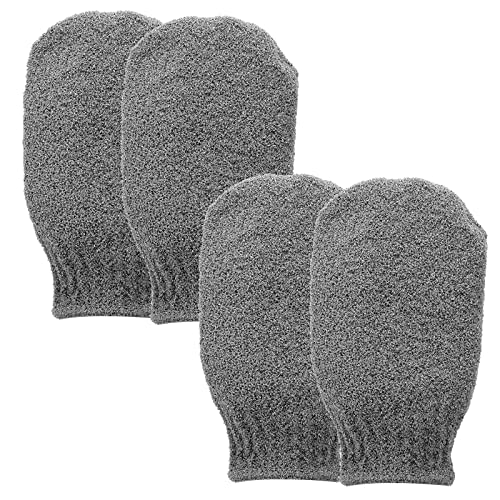Shower Mitts: The Secret to Banishing Dry Skin?
What are shower mitts?
Shower mitts, also known as exfoliating gloves or shower gloves, are designed to enhance the process of exfoliation. These gloves resemble typical gloves, but are made of a rough texture such as loofah, sisal, or other materials that help scrub away dead skin cells. Shower mitts are popular for their ability to promote smooth and radiant skin. But can they also help with dry skin?
Exfoliation for dry skin
Exfoliation is an essential step in any skincare routine, especially for those dealing with dry skin. Dry skin occurs when the skin lacks moisture and natural oils, leading to flakiness, roughness, and discomfort. Gentle exfoliation can help remove the barrier of dead skin cells, allowing for better absorption of moisturizers and other skincare products.
How shower mitts can help
Shower mitts are one tool that can aid in exfoliating dry skin. When used properly, these gloves can help slough off dead skin cells and improve the overall texture of the skin. The rough texture of the mitts helps to physically exfoliate the skin, promoting blood circulation and revealing the healthier layers underneath.
Regular exfoliation with shower mitts can also help unclog pores, preventing acne breakouts and other skin issues. By removing the barrier of dead skin cells, shower mitts allow for better penetration of moisturizing products, helping to lock in moisture and alleviate dryness.
How to use shower mitts for dry skin
Using shower mitts for dry skin requires a gentle touch to avoid aggravating the skin further. Here are some tips for getting the most out of your shower mitts:
- Choose the right material: Opt for mitts made from gentle materials like microfiber or cotton if you have sensitive skin. For normal skin, loofah or sisal mitts can provide a deeper exfoliation.
- Prep your skin: Before using the mitts, wet your skin and allow it to soak in warm water for a few minutes. This will soften the skin and make it easier to remove dead cells.
- Apply gentle pressure: Avoid applying too much pressure while exfoliating with shower mitts. This can cause irritation and damage to the skin. Instead, use gentle circular motions to buff away dead skin cells.
- Moisturize afterwards: After exfoliating, hydrate your skin with a moisturizer that suits your skin type. The combination of exfoliation and moisturization can help alleviate dryness and promote a healthy skin barrier.
- Do not overdo it: Exfoliating too often can strip the skin of its natural oils and cause further dryness. Limit exfoliation to 1-2 times per week, or as recommended by your dermatologist.
Other tips for managing dry skin
While shower mitts can be a beneficial tool for exfoliating dry skin, they should be used in conjunction with other skincare practices. Here are some additional tips to manage dry skin:
- Use a gentle cleanser: Opt for mild, fragrance-free cleansers that do not strip the skin of its natural oils.
- Avoid hot showers: Hot water can further dry out the skin. Opt for lukewarm showers and limit the time spent in the water.
- Moisturize regularly: Apply a good quality moisturizer after showering and throughout the day to keep your skin hydrated.
- Protect your skin: Use sunscreen to protect your skin from harmful UV rays and extreme weather conditions.
- Stay hydrated: Drink plenty of water to hydrate your skin from within.
- Consult a dermatologist: If dry skin persists or becomes severe, it is advisable to consult a dermatologist for personalized recommendations and treatment options.
The verdict
Shower mitts can be a valuable tool for exfoliating dry skin, promoting a smoother and healthier appearance. However, it is essential to use them correctly and in combination with other skincare practices to achieve the best results. Remember, everyone’s skin is unique, and what works for one person may not work for another. If you have any concerns about using shower mitts or managing dry skin, consult with a dermatologist for personalized advice.





![LINDISSIMA - Exfoliating Mitt Body Scrubber, Double-Sided Exfoliating Glove [UK Brand], Shower Puff Loofah Sponge, Dual Action Gentle Body Scrub Exfoliator & Bath Sponge for Skin Cleaning.](https://m.media-amazon.com/images/I/617KSXWi37L.jpg)
